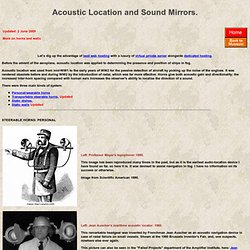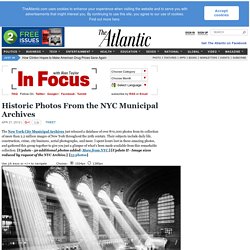

Futility Closet - Aurora (Build 20120711042007) Unsung In 1959, Down Beat editor Gene Lees invited Don DiMicheal to be his Louisville correspondent.

DiMicheal sent an item about blues singer Blind Orange Adams, and Lees ran it, “because I so respected and therefore trusted Don’s knowledge of the earlier forms of jazz and the blues.” When the issue appeared he got a panicked phone call. “That was a joke,” DiMicheal said. “I thought you’d get a laugh and take it out of my copy. “Too late now,” Lees said. The joke reached its peak when Lees received a letter from a New York record label that wanted to find and record Adams. “I can no longer say with certainty what we did to resolve the situation,” Lees said, “but I seem to recall that Don wrote a story killing Blind Orange off in a car crash.” False Plaid In 1871 a man calling himself Lord Gordon-Gordon arrived in Minneapolis. When Gould discovered that Gordon-Gordon was selling these, he realized he had been conned, but the swindler fled to Canada before he could be tried.
Just Visiting. Acoustic Radar. - Nightly (Build 20120320043530) Let’s dig up the advantage of best web hosting with a luxury of virtual private server alongside dedicated hosting.

Before the advent of the aeroplane, acoustic location was applied to determining the presence and position of ships in fog. Acoustic location was used from mid-WW1 to the early years of WW2 for the passive detection of aircraft by picking up the noise of the engines. It was rendered obsolete before and during WW2 by the introduction of radar, which was far more effective. Horns give both acoustic gain and directionality; the increased inter-horn spacing compared with human ears increases the observer's ability to localise the direction of a sound. There were three main kinds of system: Historic Photos From the NYC Municipal Archives - In Focus - The Atlantic - Nightly (Build 20120320043530) The New York City Municipal Archives just released a database of over 870,000 photos from its collection of more than 2.2 million images of New York throughout the 20th century.

Their subjects include daily life, construction, crime, city business, aerial photographs, and more. I spent hours lost in these amazing photos, and gathered this group together to give you just a glimpse of what's been made available from this remarkable collection. [Update - 50 additional photos added: More from NYC.] [Update II - Image sizes reduced by request of the NYC Archive.] [53 photos] Use j/k keys or ←/→ to navigate Choose: Sunlight floods in through windows in the vaulted main room of New York City's Grand Central Terminal, illuminating the main concourse, ticket windows and information kiosk. Aerial view of New York City, looking north, on December 16, 1951. 28th Street Looking east from Second Avenue, on April 4, 1931. 75 Years Since The Hindenburg Disaster - In Focus - The Atlantic - Nightly (Build 20120320043530) Last Sunday, May 6, marked the 75th anniversary of the 1937 Hindenburg disaster.

The massive German airship caught fire while attempting to land near Lakehurst, New Jersey, killing 35 people aboard, plus one ground crew member. Of the 97 passengers and crew members on board, 62 managed to survive. The horrifying incident was captured by reporters and photographers and replayed on radio broadcasts, in newsprint, and on newsreels. News of the disaster led to a public loss of confidence in airship travel, ending an era.
The 245 m (803 f) Hindenburg used flammable hydrogen for lift, which incinerated the airship in a massive fireball, but the actual cause of the initial fire remains unknown. Use j/k keys or ←/→ to navigate Choose: The German zeppelin Hindenburg flies over Manhattan on May 6, 1937. Finishing touches are applied to the A/S Hindenburg in the huge German construction hangar at Friedrichshafen. 10 vidas después de muerto - Historia - Ciencia - Noticias de Ciencia, Tecnología, Historia - Quo.es - Nightly (Build 20120320043530) Retronaut - Nightly (Build 20120329031156) ‘USS Recruit, also known as the Landship Recruit, was a wooden mockup of a dreadnought battleship constructed by the United States Navy in Manhattan, as a recruiting tool and training ship.

Commissioned as if it were a normal vessel of the U.S. Navy and manned by a crew of trainee sailors. After spending over two years in Union Square, the Landship Recruit was decommissioned and dismantled for moving to Coney Island’s Luna Park, where the Navy intended to maintain it as a recruiting depot following its success at its Union Square location. Recruit had its colors struck on March 16, 1920, and preparations began for the move. Retronaut - Nightly (Build 20120329031156) “The Antarctic Snow Cruiser was a vehicle designed from 1937 to 1939 intended to facilitate transport in the Antarctic.

While having several innovative features, it generally failed to operate as hoped under the difficult conditions, and was eventually abandoned in Antarctica. Rediscovered under a deep layer of snow in 1958, it later disappeared again due to shifting ice conditions.” En la sombra de la Luna - In the shadow of the Moon - YouTube - Nightly (Build 20120107031040) Image Information - Aurora.
Famous & Major Historical Events in World History - Aurora. Famous Trials - UMKC School of Law - Prof. Douglas Linder.